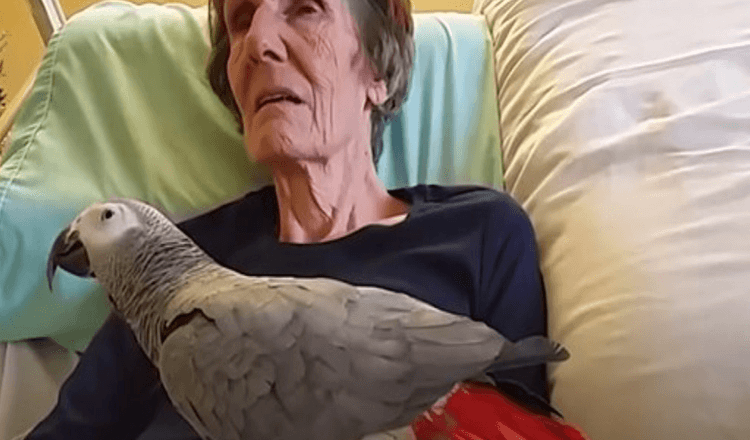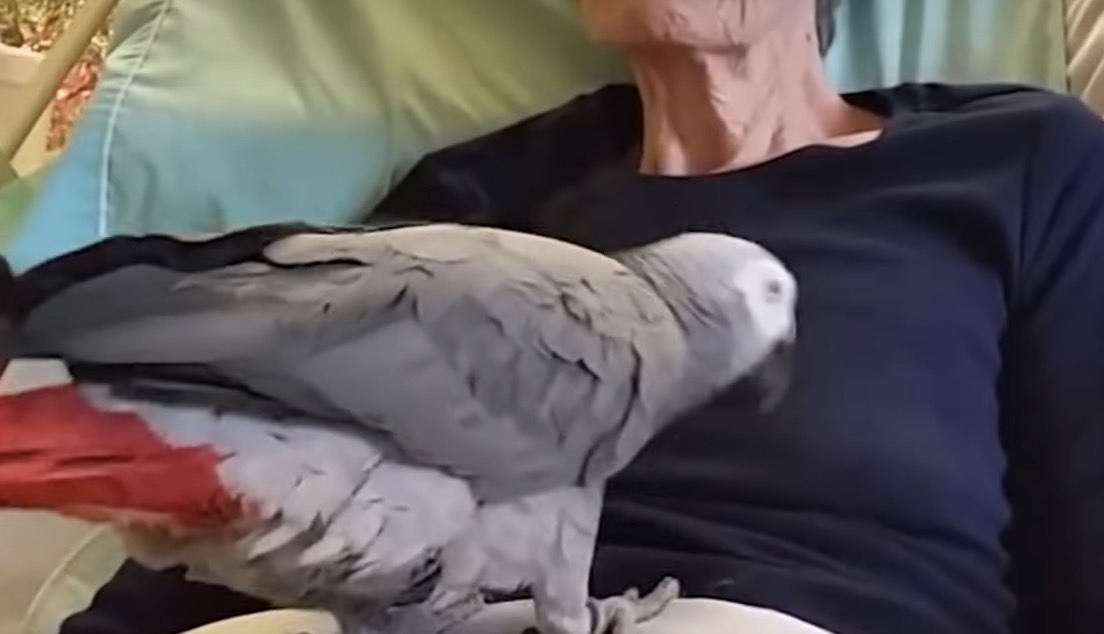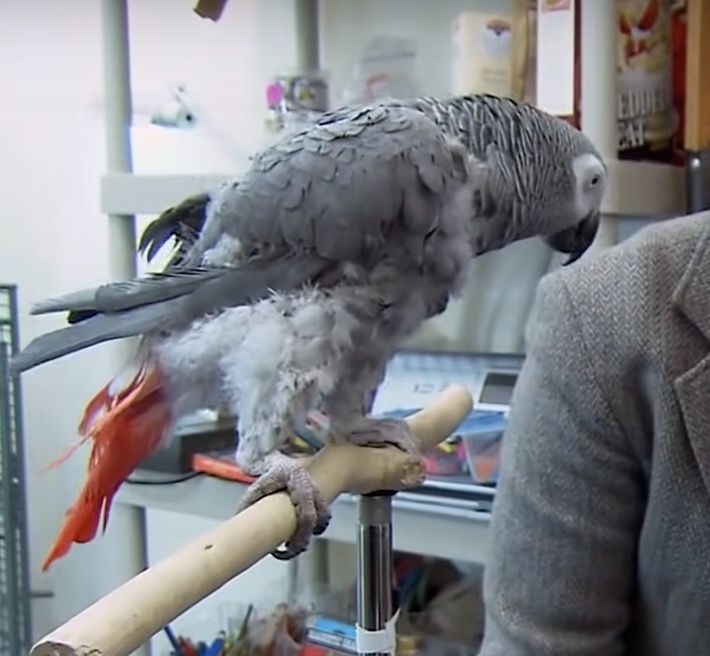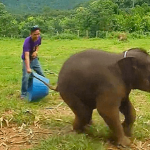
Sinbad, the African Gray parrot, has captured the hearts of animal lovers all all over the world along with his touching story of devotion and love. He has proven that animals are able to experiencing a variety of feelings and may really feel each happiness and disappointment similar to us people.

For over 25 years, Sinbad has been dwelling along with his proprietor, a form and caring girl who has liked him like her personal little one. They’ve shared many fantastic moments collectively, however sadly, the time has come for them to half methods.

As his proprietor’s well being started to say no, Sinbad by no means left her facet. He stayed along with her within the hospital, comforting her along with his presence and protecting her firm throughout her final days. Regardless of the disappointment and ache that surrounded them, Sinbad remained a relentless supply of affection and assist for his human mother.
As anybody who has ever liked a pet is aware of, the bond between an animal and their proprietor is extremely sturdy. For Sinbad, his proprietor was greater than only a companion – she was his household, his all the things. And as she lay within the hospital mattress, he refused to depart her facet, understanding that she wanted him now greater than ever.

The second when his mother mentioned “I really like you” to him was a heart-wrenching one. Sinbad’s eyes crammed with tears, and his little physique shook with emotion. It was a reminder that animals should not simply senseless creatures – they’ve emotions, ideas, and feelings similar to us.

The video of Sinbad and his mother has touched the hearts of hundreds of thousands, and it’s simple to see why. His devotion and love for her are really outstanding, and it’s clear that he’ll all the time maintain a particular place in her coronary heart.
Watch the video beneath to have extra info.

As we watch Sinbad and his mother say their last goodbyes, we’re reminded of the ability of affection and the unbreakable bond between animals and their homeowners. Sinbad could also be only a fowl, however his story has touched us all and reminds us to cherish the moments we’ve got with our beloved pets.
What 5 traits do all animals have in widespread?
What 5 traits do all animals have in widespread?
Within the following slides, we’ll discover the fundamental traits shared by all (or a minimum of most) animals, from snails and zebras to mongooses and sea anemones: multicellularity, eukaryotic cell construction, specialised tissues, sexual copy, a blastula stage of improvement, motility, heterotrophy and possession …
What traits do all animals have in widespread quizlet?
The six traits that every one organisms within the animal kingdom share are: they’re multicellular, nearly all can transfer, their cells don’t have any cell wall, they should hunt for their very own meals (shoppers), they’re eukaryotic, reproduce sexually-when two cells be part of to kind off spring and their cells lack chloroplasts.
What 4 traits do all animals share?
Most animals share these traits: sensory organs, motion, and inner digestion. All of them are illustrated in Determine beneath. Animals can detect environmental stimuli, equivalent to gentle, sound, and contact. Stimuli are detected by sensory nerve cells.
What are the 7 traits of all animals?
- 1 Diet. Dwelling issues absorb supplies from their environment that they use for progress or to offer vitality.
- 2 Respiration.
- 3 Motion.
- 4 Excretion.
- 5 Development.
- 6 Copy.
- 7 Sensitivity.
What are the 6 traits widespread to all animals?
They’re as follows:
- All animals are made up of cells that wouldn’t have cell partitions.
- All animals are multicellular organisms.
- Most animals reproduce sexually.
- All animals are able to self-propelled movement sooner or later of their lives.
- All animals are heterotrophic and should eat different organisms for vitality.
What protein do all animals have in widespread?
The exctracellular protein collagen (making probably the most considerable extracellular protein in animals) which is required in multicellular organisms to maintain the cells collectively, which is unique to animals. Most enzymes answerable for metabolic pathways.
What are the three traits of animals?
Traits of Animals
- Animals are multicellular organisms.
- Animals are eukaryotic.
- Animals are heterotrophic.
- Animals are typically motile.
- Animals possess specialised sensory organs equivalent to eyes, ears, nostril, pores and skin, and tongue.
- Animals reproduce sexually.
What are the fundamental traits of all animals?
Within the following slides, we’ll discover the fundamental traits shared by all (or a minimum of most) animals, from snails and zebras to mongooses and sea anemones: multicellularity, eukaryotic cell construction, specialised tissues, sexual copy, a blastula stage of improvement, motility, heterotrophy and possession of a complicated nervous system.
What do all animals have in widespread with one another?
Sexual copy is one other attribute shared by most, however not all, animals. No matter species, all animals share multicellularity, which implies their our bodies encompass a number of cells. This units animals other than organisms, equivalent to single-celled algae, fungi, micro organism and different primary life types.
What do vegetation and animals have in widespread?
Most vegetation are additionally multicellular, so though it is a attribute shared by all animals, it’s not one distinctive to animals.Each animal on the planet is a eukaryote. A eukaryote is an organism that consists of cells which have membrane-bound nuclei and organelles.
What are the traits of the animal kingdom?
All animals are eukaryotic, multicellular organisms, and most animals have complicated tissue construction with differentiated and specialised tissue. Animals are heterotrophs; they need to eat dwelling or useless organisms since they can not synthesize their very own meals and might be carnivores, herbivores, omnivores, or parasites.



